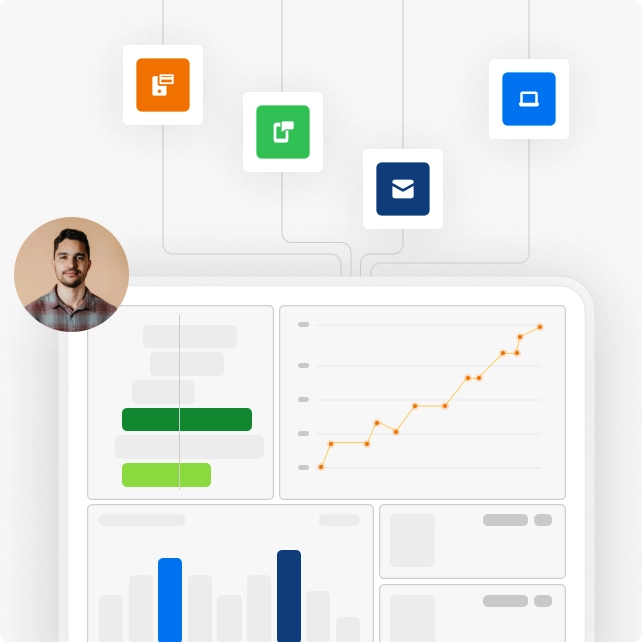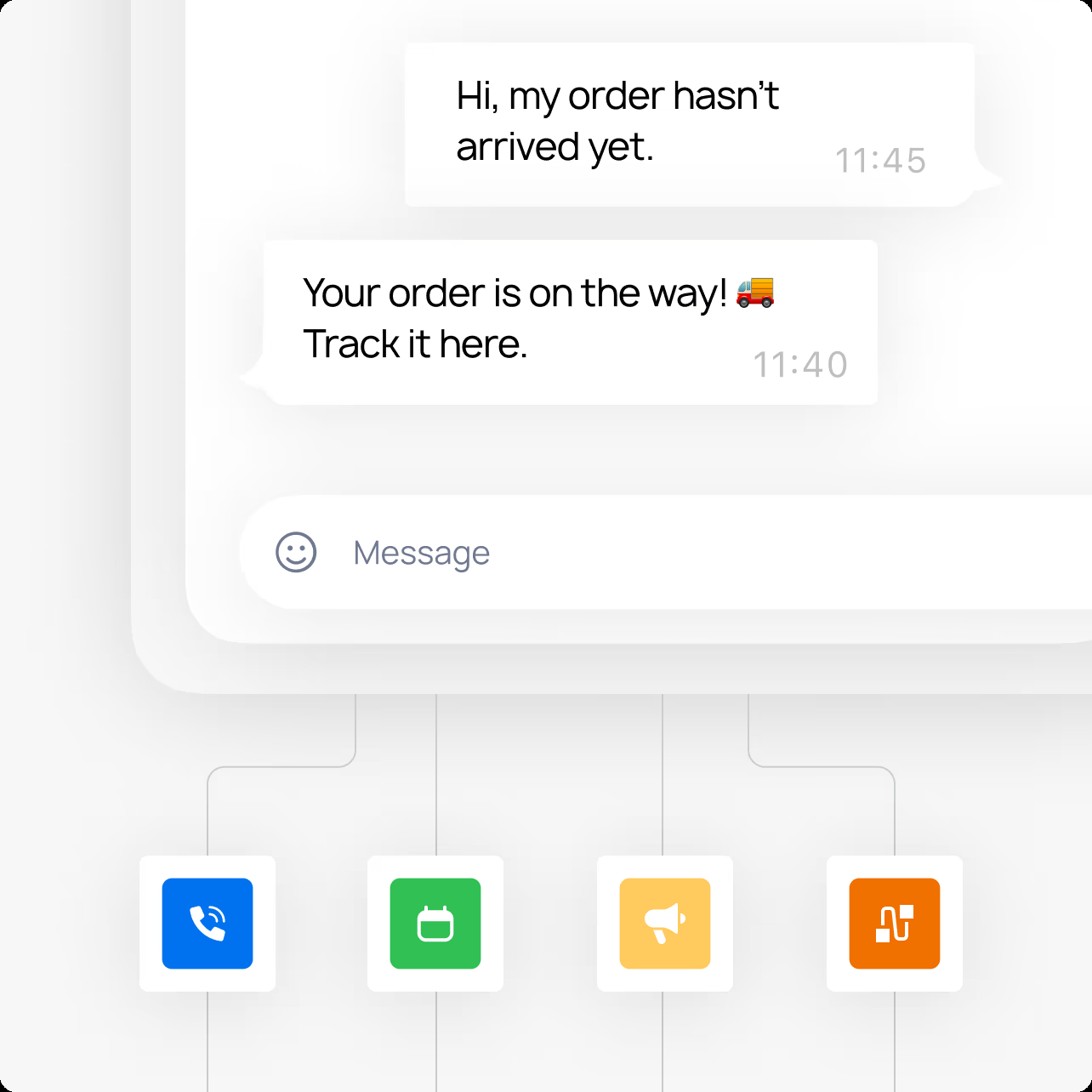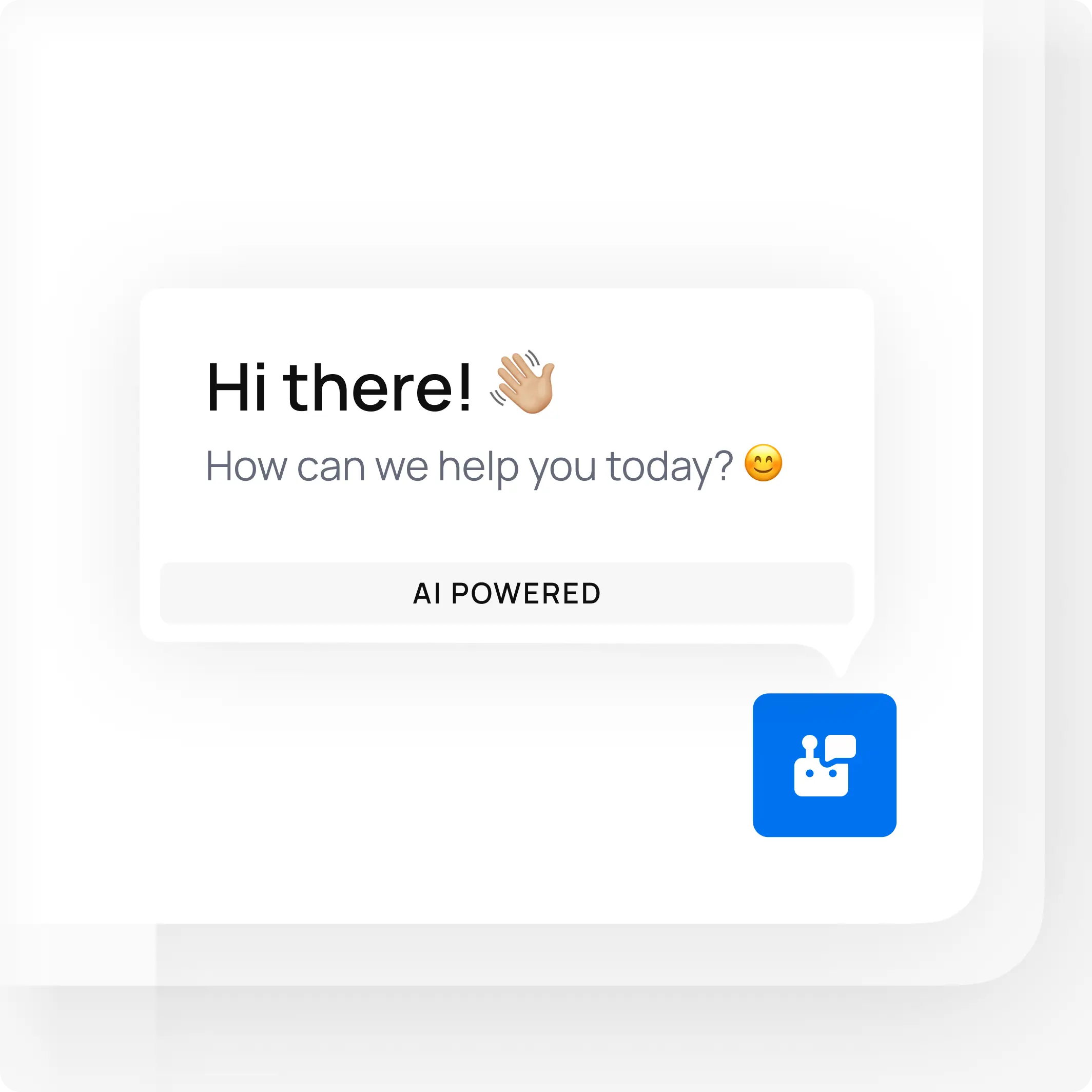How to Create a Winning Omnichannel Content Strategy in 2025: A Complete Guide


I. What is an Omnichannel Content Strategy?
In today’s hyper-connected world, customers don’t see channels; they see a single brand. They might discover a product on Instagram, research it on a laptop, ask a question via a mobile app’s chatbot, and finally purchase it in a physical store. To them, it’s all one continuous experience. An omnichannel content strategy is the framework that acknowledges and builds upon this reality. At its core, it is a customer-centric approach that aims to provide a seamless, unified, and consistent brand experience across every conceivable channel and touchpoint, both online and offline. It’s about creating a single, ongoing conversation that adapts and flows with the customer, wherever they choose to engage.
To truly appreciate the power of omnichannel, it’s essential to distinguish it from its predecessor, multichannel. A multichannel strategy is about being present on multiple channels. A business might have a website, a blog, a Facebook page, and a Twitter account. However, in a multichannel setup, these channels often operate in independent silos. The social media team might not know what the email marketing team is doing, and neither might be fully aware of a customer’s recent interaction with the support team. The focus is on the brand broadcasting its message out through various channels. In contrast, an omnichannel strategy integrates these channels to create a holistic ecosystem. The focus shifts from the brand to the customer. The channels work together, sharing data and context in real time to ensure that the customer’s journey is fluid and uninterrupted. If a customer adds an item to their cart on the mobile app, it should still be in their cart when they log in on their desktop. The conversation doesn’t restart on each channel; it picks up right where it left off.
The urgency for adopting an omnichannel approach has never been greater than it is heading into 2025. Modern customer expectations have skyrocketed. Consumers, now accustomed to the seamless experiences offered by digital leaders, demand personalization and convenience as standard. They have zero tolerance for friction, repetition, or disjointed interactions. Simultaneously, the proliferation of digital touchpoints has created a more complex customer journey than ever before. From smart watches and voice assistants to in-store digital kiosks and connected cars, the number of ways a customer can interact with a brand is constantly expanding. Managing these touchpoints in silos is a recipe for a fractured customer experience. The only way to deliver the meaningful engagement that builds lasting loyalty is to have a single source of truth for customer data. An omnichannel strategy, powered by a unified data platform, is no longer a competitive advantage—it is the fundamental price of entry for relevance in the modern digital economy.

II. What are the 4 C’s of Omnichannel?
To successfully build and execute an omnichannel strategy, it’s helpful to ground your approach in four core principles: Context, Consistency, Customer-led, and Content. These “4 C’s” provide a comprehensive framework for ensuring every aspect of your strategy is aligned with the goal of creating a truly seamless customer experience.
- Context
Context is the intelligent heart of any omnichannel strategy. It is the deep, real-time understanding of who your customer is, where they are in their journey, what their immediate goal is, and how they have interacted with you in the past. It’s about moving beyond broad demographic segments and delivering content that is acutely relevant to a customer’s specific, in-the-moment situation. This requires a robust data foundation, where behavioral data (pages viewed, features used), transactional data (past purchases, abandoned carts), and demographic data are unified into a single customer profile. When a customer logs into your app, a context-aware system doesn’t just say “Welcome back.” It says, “Welcome back, Mark. We see the hiking boots you were looking at on our website yesterday are now low in stock at your nearest store. Would you like to reserve them?” This level of contextual relevance is what makes an interaction feel personal, helpful, and intelligent. It demonstrates that the brand is paying attention and values the customer’s time, transforming a simple touchpoint into a meaningful and memorable engagement.
- Consistency
If context is the intelligence, consistency is the soul of the brand experience. It is the practice of maintaining a coherent and unified brand presence across every single channel. This goes far beyond simply using the same logo and color palette. It encompasses a consistent brand voice, tone, and personality in all communications. The playful, emoji-filled language used on social media should feel related to the more formal, helpful tone of a support email. Furthermore, consistency applies to messaging, offers, and policies. A product’s price should be the same on the website as it is in the app. A promotion advertised on Facebook should be easily redeemable in-store. When a customer feels like they are having one single, ongoing conversation with your brand, regardless of the channel, you are achieving consistency. This builds trust and reliability. Inconsistency, on the other hand, creates confusion and erodes confidence. If a customer is told one thing by a chatbot and another by a human agent, the experience is broken, and the brand appears disorganized and untrustworthy.
- Customer-led
A truly omnichannel approach requires a fundamental shift in perspective. Instead of creating brand-centric campaigns that push customers down a predetermined path, the strategy must be customer-led. This means designing a system that empowers customers to choose their own journey, allowing them to move between channels on their own terms, effortlessly and without penalty. The strategy must be built around the customer’s natural, and often unpredictable, behavior, not the rigid silos of the brand’s internal departments. If a customer starts a purchase on their laptop, they should be able to complete it on their phone during their commute without having to start over. If they see a product in-store, they should be able to scan a QR code to see online reviews and then have it shipped to their home. The goal is to remove all friction from these cross-channel transitions. This requires a flexible, integrated technology stack that ensures context and progress are carried over seamlessly, making the brand’s presence feel like a helpful and adaptive companion on the customer’s journey, rather than a rigid and prescriptive taskmaster.
- Content
Content is the tangible substance of your omnichannel strategy; it’s the messaging, imagery, and information you deliver at each touchpoint. In an omnichannel world, content cannot be created in a vacuum for a single channel. Instead, it requires a centralized and strategic approach, often summarized by the principle of COPE: “Create Once, Publish Everywhere.” This involves developing a central repository of modular, structured content assets. A single product description, for example, can be created once and then automatically adapted for different contexts: a long, detailed version for the website, a concise bulleted list for the mobile app, a conversational snippet for a chatbot, and a character-limited version for a social media post. This approach not only ensures consistency but also creates massive efficiencies. The content itself must be inherently valuable and designed to meet the customer’s needs within their specific context. It’s not just about delivering a consistent brand message; it’s about delivering the right answer, the right offer, or the right piece of information, in the right format, on the right channel, at the exact moment the customer needs it.
III. What is an Example of an Omnichannel Strategy?
To see how these principles come together, let’s walk through a detailed, real-world scenario of a modern, omnichannel strategy for a fashion retailer. Our customer, Sarah, represents a typical consumer navigating today’s complex path to purchase.
- Discovery (Social Media): The journey begins where many do: on social media. While scrolling through her Instagram feed, Sarah is presented with a highly targeted video ad showcasing a new pair of waterproof leather boots. The ad is not random; the retailer’s AI-powered ad platform has identified Sarah as part of an audience segment interested in outdoor activities and high-quality fashion, based on her past engagement. The ad is engaging and features user-generated content of people wearing the boots in stylish, real-world settings. Intrigued, Sarah clicks the “Shop Now” button.
- Consideration (Website): The click doesn’t just take her to a generic homepage. It deep-links directly to the mobile-optimized product page for the exact boots from the ad. The experience is seamless. On the page, she can see professional photos, a 360-degree view, detailed specifications, and, crucially, a feed of customer reviews and photos. She selects her size and adds the boots to her cart. However, a notification from a friend distracts her, and she navigates away from the website, abandoning her cart.
- Re-engagement (Email): The retailer’s system, recognizing the high-value item in the abandoned cart, triggers an automated workflow. Two hours later, an email lands in Sarah’s inbox with the subject line: “Still thinking about these?” The email is beautifully designed, showcasing a large image of the boots she selected. It doesn’t just ask her to come back; it adds value by including excerpts from top-rated reviews and a link to a blog post titled “Three Ways to Style Your Ankle Boots This Fall.” The context is perfect—it reminds her of her interest and provides helpful content, not just a hard sell.
- Interaction (Mobile App): The next morning, Sarah receives a push notification on her phone from the retailer’s app, which she had downloaded months ago to track a previous order. The message reads: “Good news, Sarah! We’re offering free shipping on all orders for the next 24 hours.” This timely incentive prompts her to open the app. Because the retailer has a unified customer data platform, the moment she opens the app, her shopping cart is perfectly synced from her website session. The boots are there, waiting for her. The friction of having to find the item again is completely eliminated.
- Conversion & Fulfillment (In-Store): As she’s about to complete the purchase in the app, she hesitates, wanting to try them on first. She notices an option: “Check In-Store Availability.” The app uses her phone’s location to show her that a store just a few blocks from her office has the boots in her size. With one tap, she reserves the item for in-store pickup. An hour later, she walks into the store. A geofence alert has already notified the store’s system of her arrival. A sales associate with a tablet receives the notification, greets her by name, and says, “Hi Sarah, welcome! I have the boots you reserved right here for you.” The associate has her full purchase history and loyalty status, allowing for a highly personal and efficient interaction. Sarah tries on the boots, loves them, and completes the purchase right there with the associate’s mobile point-of-sale device.
- Loyalty (Post-Purchase): The moment the transaction is complete, the system triggers the final step. Sarah receives a thank-you email that includes a digital receipt, care instructions for her new leather boots, and personalized recommendations for other products that would complement her purchase. The email also notes that she has earned 150 loyalty points from this purchase, encouraging future engagement and reinforcing her relationship with the brand. This entire journey, flowing effortlessly across five different channels, represents a masterclass in modern omnichannel strategy.

IV. What is an Omnichannel Strategy Approach? (A 5-Step Guide)
Developing a true omnichannel strategy is a significant undertaking that requires careful planning, the right technology, and a customer-obsessed mindset. It’s not a switch you can simply flip. The following five-step approach provides a structured roadmap for businesses looking to transition from a siloed, multichannel operation to a seamlessly integrated, omnichannel powerhouse.
Step 1: Map the Customer Journey
Before you can build a seamless journey, you must first understand the fragmented one that likely exists today. This initial step is all about empathy and analysis. Begin by identifying every single potential touchpoint a customer could have with your brand, both online (website, social media, email, app, paid ads) and offline (in-store, call center, events). Next, develop detailed user personas representing your key customer segments. Go beyond basic demographics to understand their goals, primary motivations, and, most importantly, their pain points and sources of friction. With these personas in hand, map out their current journeys. Follow their paths across different channels, noting where context is lost, where they have to repeat themselves, and where the experience feels disjointed. This exercise will reveal the critical “moments of truth” and highlight the biggest opportunities for improvement. The final output should be a blueprint of the ideal, frictionless journey from the customer’s perspective, which will serve as your north star for the entire project.
Step 2: Centralize Your Data
Data is the lifeblood of any omnichannel strategy. Without a unified, 360-degree view of the customer, it’s impossible to provide the context and personalization that a seamless experience demands. This is often the most challenging step, as it requires breaking down the organizational silos that keep data locked away in separate systems. Your CRM, e-commerce platform, point-of-sale system, analytics tools, and customer service software all hold valuable pieces of the customer puzzle. The goal is to bring them all together. Implementing a robust Customer Data Platform (CDP) is the modern solution to this problem. A CDP is designed specifically to ingest data from multiple sources, cleanse and de-duplicate it, and stitch it together to create a single, persistent customer profile. This unified profile becomes the central source of truth that feeds every other tool in your tech stack, ensuring that the marketing team, the sales team, and the support team are all working from the same, up-to-the-minute information.
Step 3: Conduct a Content & Channel Audit
With a clear understanding of your customer journey and your data centralized, the next step is to evaluate your current assets. First, conduct a comprehensive content audit. Analyze all your existing marketing and support content—blog posts, product descriptions, videos, FAQs, email templates. Is this content accurate and consistent? More importantly, is it modular? Can a single piece of information be easily and programmatically repurposed for different channels and formats? This audit will reveal where you need to create new content or restructure existing assets to be more flexible. Concurrently, perform a channel audit. Evaluate the specific role that each of your channels plays in the customer journey. Is Instagram best for discovery? Is your mobile app best for loyalty and re-engagement? Is your chatbot effective for simple support queries? Understanding the unique strengths of each channel will allow you to design workflows that leverage them most effectively, ensuring you deliver the right message in the right place.
Step 4: Invest in the Right Technology
An omnichannel strategy is only as strong as the technology that underpins it. Attempting to execute a seamless journey with a patchwork of outdated, disconnected systems is doomed to fail. This step requires a critical evaluation of your technology stack. You need platforms that are built for integration and real-time data sharing. This often means moving towards a “headless” or API-first architecture. A headless CMS, for example, decouples content from its presentation layer, allowing it to be delivered to any channel—a website, an app, a smartwatch—via an API. As mentioned, a powerful CDP is non-negotiable. Finally, your marketing automation or customer engagement platform must be the central brain of the operation. Look for platforms that explicitly support omnichannel orchestration through visual journey builders and have strong, open APIs. Critically, forward-thinking businesses should seek out platforms that are built to support the next wave of automation with agentic AI, leveraging standards like the Model Context Protocol (MCP) to allow AI to not just analyze data, but to take action across your entire tech stack.
Step 5: Measure, Analyze, and Optimize
An omnichannel strategy is not a “set it and forget it” initiative. It is a living, breathing system that requires continuous monitoring and refinement. The key is to shift your measurement focus away from siloed channel metrics (like email open rates or social media likes) and towards holistic, customer-centric KPIs. The metrics that truly matter are those that measure the health of the overall customer relationship. Track metrics like Customer Lifetime Value (CLV), customer churn rate, and cross-channel conversion rates. How many customers who start their journey on social media ultimately convert in-store? How does a positive support interaction impact future purchase frequency? By analyzing these overarching metrics, you can gain a true understanding of what’s working and what isn’t. Use this data to continuously run A/B tests and optimize your customer journeys, always striving to remove friction and add value at every touchpoint.

V. The indigitall Advantage: Unifying the Customer Conversation
While the theory of an omnichannel strategy is compelling, its practical execution can be dauntingly complex, often requiring businesses to stitch together a dozen different software tools, leading to data lags, broken workflows, and a fragmented customer view. This is precisely the challenge that indigitall was built to solve. The platform provides a powerful, unified solution designed to simplify the creation and management of true omnichannel campaigns, ensuring the entire customer conversation is managed seamlessly in one place.
Making Omnichannel Easy:
The core philosophy behind the indigitall platform is the democratization of sophisticated marketing technology. It simplifies the inherently complex process of omnichannel execution through a single, intuitive interface centered around powerful visual journey builders. This allows marketers, without needing to write a single line of code, to easily map out and automate intricate customer journeys that span multiple channels. They can drag and drop triggers, actions, and messages to design a workflow that, for example, sends a web push notification to a new visitor, follows up with a personalized email if they don’t convert, and sends a targeted offer via WhatsApp a week later based on their browsing behavior. This accessibility is transformative; it removes the technical barriers that have historically kept powerful omnichannel strategies out of reach for all but the most resource-rich enterprises, empowering businesses of all sizes to launch sophisticated, personalized campaigns quickly and efficiently.
Covering the Entirety of the Customer Conversation:
indigitall stands out in the market because it is the only platform architected to manage the complete, end-to-end customer lifecycle within a single, unified system. Many vendors offer a “marketing cloud” or a “service cloud,” forcing businesses to use separate platforms for different stages of the customer relationship. This inevitably leads to lost context and a disjointed experience. indigitall, by contrast, covers every interaction from the very first marketing touchpoint (like an ad or a welcome email), through the active sales and consideration process (with personalized in-app messages and cart abandonment campaigns), and deep into the post-purchase and support cycle (with transactional notifications and fully interactive AI-powered agents on channels like WhatsApp). This holistic approach means that the data from a customer service conversation can be used to immediately inform the next marketing message, creating a virtuous cycle of continuous learning and personalization.
A Truly Unified Experience:
The ultimate benefit of the indigitall approach is the creation of a truly unified and seamless experience, both for the business and its customers. Because all channels—including web engagement, mobile app messaging, push notifications, email, SMS, and conversational channels like WhatsApp—are native components of a single platform, customer context is never lost. A conversation that begins with an AI agent on the website can be seamlessly picked up on the customer’s mobile app, with the AI retaining the full history and understanding of the interaction. This eliminates the customer frustration of having to repeat themselves and solves the business challenge of maintaining a single, coherent dialogue. This unified architecture is the key differentiator that allows indigitall to ensure its clients are not just practicing multichannel marketing—blasting messages from separate silos—but are executing a sophisticated, effective, and truly omnichannel strategy that builds lasting customer relationships.











